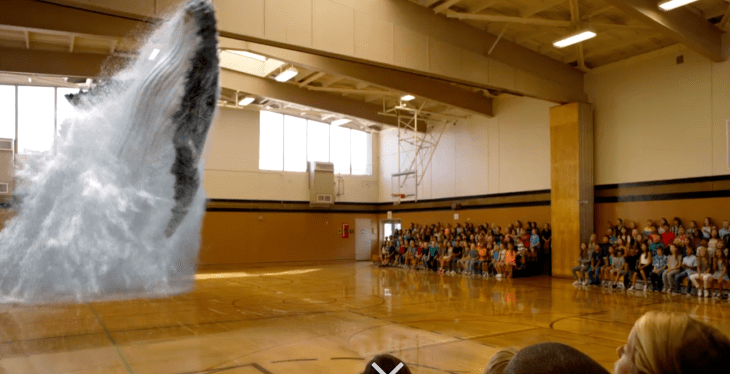Anyone hoping that Magic Leap would share exact plans today about when it will debut its “mixed reality” technology was probably a little disappointed. At a Fortune conference in Aspen this afternoon, Magic Leap founder and CEO Rony Abovitz and company CMO Brian Wallace called the company’s products “very real” and “not a research project anymore.” They also seemed to hint that they’ll release their tech this fall. But they stopping short from explicitly saying so.
Said Abovitz of the now 600-person company, which operates out of a former Motorola factory in Fort Lauderdale, Fla., “We have production lines that look like aircraft carriers with class 100 cleanrooms [which feature controlled levels of contamination]. That’s running right now. We’re debugging our high-volume production line. It’s [being] made in the U.S., this summer. So we’re in that go mode, and hopefully soonish, the public will see [our products].
Magic Leap has raised $1.4 billion from investors at this point, including Alibaba, Andreessen Horowitz, and Google. In fact, Google CEO Sundar Pichai sits on the company’s board. (It also counts director Peter Jackson as an advisory board member.)
Asked what’s so expensive, Abovitz — whose last company sold for $1.65 billion a few years ago — noted that Magic Leap is “building a full-stack computing company,” from its chip designs to sensors to software to much of its content. “We took on the whole problem, including the manufacturing [because] we wanted to deliver something that never existed before and there was no way to do it unless we created everything from scratch.”
The company’s technology, as both described by Abovitz and Wallace, certainly sounds nothing short of revolutionary, even while it has competitors in Microsoft’s HoloLens headset and Meta, another maker of an augmented reality headset.
Though it requires a kind of “lightweight” headset that only its employees, strategic partners, and “thousands” of other people who’ve signed NDAs with the company have so far seen, Abovitz took pains today to distinguish Magic Leap’s technology from tech that outsiders have experienced to date.
“With [virtual reality],” he said, “you generally put a cell-phone-type screen in front of your eye; it’s sort of like a stereoscopic device. With [augmented reality], most people associate that with a heads-up display, and that’s not what we do, either. We give you a neurologically true visual perception. As long as you aren’t touching something, our digital objects, environments, and people really are neurologically true. It’s one of those things that you have to experience to believe.”
In fact, Abovitz said people can be rendered so realistically that the company is thinking of making them “a little brighter, a little hyperreal” to help “distinguish between what’s Magic Leap and what’s not.”
In the meantime, the company did shed a little more light on its plans. It said, for example, that while it intends to focus first on games and entertainment, it sees its tech being used in a variety of ways, including for e-commerce, healthcare, and workplace productivity. (Wallace went so far as to say that in the “2020s, 70 percent of the people in this room will be wearing a device like Magic Leap.”)
Abovitz and Wallace also seemed to stress the importance to Magic Leap of working with outside developers. Wallace said that there are “already external developers working on our systems day in and day out, creating content and experiences.”
Abovitz meanwhile mentioned a “secret lab”in San Francisco’s historic Presidio national park where Lucasfilm is headquartered. (The Disney subsidiary announced a strategic alliance with Magic Leap last month.)
It’s “right outside from the Yoda fountain,” he disclosed, quickly adding that visitors require certain privileges (i.e., they need to be employees of Magic Leap or Lucasfilm) but that there’s also a “developer lab that we’re building out [where] all kinds of devs from the Bay Area can come and hang out and hopefully build stuff before launch.”
If you’re interested in learning more, you can catch the full interview here:
